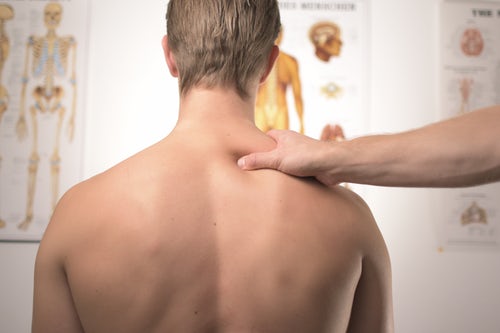nalco group
bone, muscle & joint pain physio
BOOK NOW / WHATSAPP ABOUT YOUR PAIN OR INJURY
- ORCHARD 400 Orchard Road #12-12 Singapore 238875
- TAMPINES 9 Tampines Grande #01-20 Singapore 528735
- SERANGOON 265 Serangoon Central Drive #04-269 Singapore 550265
Home > Blog > Ergonomics > Repetitive Strain Injuries – Prevention and Management
Repetitive Strain Injuries
Prevention and Management
In a related article "Do You Have Repetitive Strain Injuries?", we covered that often patients with repetitive strain injuries tends to get their RSIs due to work, but frankly speaking, it can also be caused, aggravated or prolonged by activities, hobbies and passions outside of work.
Examples:
- Playing musical instruments like guitar, drum, etc
- Sports/activities such as golf, tennis, running, hiking
- Hobbies such as reading, writing etc
Of course, as we grow older, there is two issues: more time and compounding damage from repetitive strain injuries from work and outside-work activities; and secondly is that as we grow older, our body's ability to repair damage and wear and tears diminishes too unfortunately.

Usually, repetitive strain injuries are caused AND aggravated by:
- work type
- work demands
- work and workplace conditions (setup, layout etc)
These types of RSI causes can be managed and corrected by teaching and training ergonomics to patients, individuals, human resource. Basically, ergonomics refers to the science of matching the job to the individual, job being tasks, products, systems and environments to the worker (which is in contrast to the common model of making workers fit the pre-set and mapped out working environment.
some ergonomic ideas and recommendations
#1 - Limiting Repetitive Work
We move by contracting and elongating muscles, which stretch/strains both muscles and joints each time it happens. Repeated stretching and straining affects the muscles and tendons, causing micro-traumas (micro-tears) and it will cause
- soreness
- tenderness
- aches
- pains
If our muscles and tendons do not get enough time to rest or recover, hence the injury is unable to heal or unable to heal well. In fact, it gets worse: muscles that are fatigued/overworked...have to work MUCH harder to get the same job done (like if you're tired, walking a short distance becomes harder than normal).
Solution:
- Quick wins: Take short and frequent micro-breaks, 10-20 seconds stretches and walks and standing etc
- Long term: exercise 2-4x per week
#2 - Prevent Static Positions (Or Awkward Ones)
Being "stuck" in a position is not good for our bodies, and if it's an awkward position, it's even worse (awkward positions are like very high or very low or with twisted/rotated position). The best position is a "neutral, relaxed" position ie
- shoulders relaxed
- arms by side
- elbows about 90 degrees bent
- hand and wrists straight
- hips, knees and ankles around 90 degrees bent
If you stay in positions that is against/deviated from the above for some time, you will stress all the joints, muscles, tendons etc - it will strain them a lot.
Solution:
- Try to move around as often as you can, ideally standing and walking to encourage circulation
- Try to arrange your workplace that suit your height, shape, distance etc
- Try to arrange stuff that you use more often to be nearer to you
- Try to use appropriate tools for the job
#3 Note How You Lift Stuff
Poor lifting techniques will accelerate, cause and aggravate back injuries.
Solution:
- Always use your knees and legs when lifting ie bend the knee and keep the spine straight
- Bring the objects to carry as near as possible (the further away, the more difficult)
- Try to get help or use solutions as often as possible eg trolleys
#4 Try Not To Stand Too Long
Standing for prolonged period of time will strain and stress your back, neck, knees and foot.
Solution:
- Wear high quality shoes/footwear
- Try to use standing/ergo foot mats
- Shift weight very so often, and take a few steps whenever possible
- Sit whenever possible as well
- Try to slightly bend your knee and avoid your knee from being totally straight when standing
#5 Try Often To Use Tools And Setup Things To Make Your Movement And Life Easier
Eg/solutions:
- Using trolleys to carry/push load over distances
- Using escalators/lifts
- Using the right tools for the job
- Using the right chair and table height and size
- Ensuring your tools are within reach (not too near/far)
- Keeping fit with regular deep tissue massage, regular personal training and even regular clinical Pilates to ensure your core in strong
- Etc
